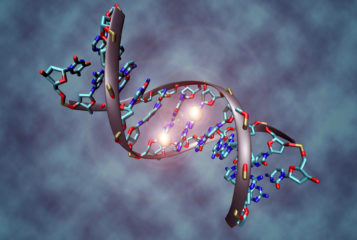Obese children and adolescents experience higher levels of genomic instability, potentially increasing the risk of cancer in adulthood, a study has shown.
Genomic instability can lead to an increased rate of DNA mutation in a cell and therefore a higher likelihood of cancer development. Researchers at the University of Westminster, London, worked in collaboration with doctors at King's College Hospital, London, and St George's Hospital, London, to analyse a variety of measurements from individuals with and without obesity to develop a new approach for predicting genomic instability.
First author Dr Moonisah Usman, of the University of Westminster said: 'The study involved 132 children and adolescents aged 10–18 and used quantitative measurements of the body composition of participants including BMI Z-score, waist and hip circumference, and body fat percentage. Inflammation and vitamin D levels in saliva and DNA damage through urine and cheek swab samples were also assessed to score for genomic instability.'
Researchers drew on previous studies that argued excess fat tissue can lead to increased inflammation and nutritional deficiencies, including vitamin D. The understanding is that these conditions could cause genomic instability, which could ultimately lead to cancer.
The results from the cross-sectional study that recruited participants from schools and paediatric obesity clinics in London were published in the International Journal of Obesity. The researchers found that obesity, vitamin D levels and oxidative DNA damage are three significant predictors of genomic instability that, taken together, could allow for non-invasive monitoring and predictive modelling of genomic instability in young patients with obesity.
Lead author Dr Emanuela Volpi, at the University of Westminster said: 'Predictive modelling based on these findings could assist clinicians in interpreting the significance of weight-loss interventions in children and adolescents, and support them with prioritising the provision of further clinical measures to help reduce the risk of cancer later in life.'
These findings could help to assess the risk for young individuals with obesity to develop cancer in later life, and help target efforts to reduce the risk of cancer.





Leave a Reply
You must be logged in to post a comment.